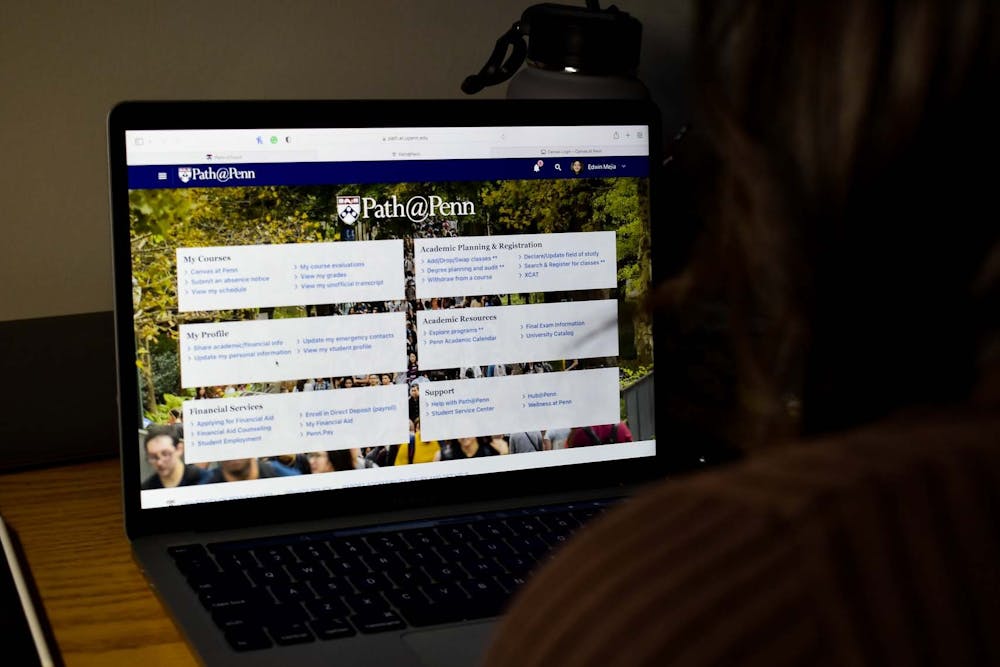Students can now register for courses using Path@Penn for the first time but encountered difficulties navigating the new interface and creating schedules.
Path@Penn, Penn’s new registration system, went live on March 14, replacing Penn InTouch as the new student information system containing academic records, financial aid, and student profiles. After advance registration opened on April 18, students have started to plan their preferred courses and alternative courses using the new system. Students reported having hopes that Path@Penn would improve on Penn InTouch — only to be disappointed with the registration system.
“I was kind of thinking that this new software would be similar to Penn InTouch, just aesthetically more modern and easier to navigate,” College first year Grace Edwards said. “[But] it’s not as efficient or effective as Penn InTouch in the sense of maneuvering around it and understanding how the website works.”
Students said they have found it complicated to create mock schedules through Path@Penn.
College sophomore Nick Hanchak said, “I still don’t know how to make a mock schedule or anything like that. It’s not as simple as I would have hoped, so it’s definitely taking a little bit to get used to.”
College first year Logan Fleming echoed these sentiments, saying that he did not like how he was unable to create multiple mock schedules on the new system. Fleming and Hanchak said they both had to resort to Penn Course Plan to create mock schedules for their fall 2022 course load.
Fleming pointed out that on Path@Penn, at the time of speaking to The Daily Pennsylvanian, students only had the option to report their gender as male or female on their profiles, whereas Penn InTouch had more options.
As of April 19, the personal information section of Path@Penn allows students to self-report their gender identity, including nonbinary, transgender, and other options.
Fleming, who is a member of the Lambda Alliance — an advocacy group for LGBTQ students at Penn — said the Lambda Alliance board had met with Interim President Wendell Pritchett on April 13 about the issue. Pritchett had said it was a problem with the coding company and that the problem would be resolved.
Students have also found the release of Path@Penn right before advance registration to be unfavorable timing.
“We have to take more time out of our already busy schedules, close to the end of the year, and the end of the semester, to try and familiarize ourselves with this new platform,” Edwards said. “It would have ideally been better and easier had they given it to us like spring break, where we could actually dedicate the time to familiarize ourselves.”
The change from three-digit course codes to four-digit course codes also proved an additional challenge, Edwards and Hanchack both said.
“I planned out some other courses at the beginning of the semester and last semester with the three-digit course code. And now I have to use Penn Course Review to try and figure out the new course code,” Edwards said.
Hanchak added that, as a neuroscience major, the change in course codes from BIBB to NRSC confused him.
When Penn first announced Path@Penn, many students said they were looking forward to using a new and easier-to-navigate platform. Some have found the new interface to be more navigable and visually pleasing.
“I at first was excited because Penn InTouch seemed very old. And I feel like it could have been modernized a lot,” Hanchak said.
Fleming echoed Hanchak’s feelings on the aesthetics of the platform, saying, "I do like that it doesn’t look like it’s from the '90s anymore." He added that he looks forward to Path@Penn not crashing the day schedules come out.
Students hope that Penn will eventually make the new registration system more intuitive.
“The software looks more modern, which is good. But once again, if I have problems with the efficiency and the function of Path@Penn, the aesthetics don’t really matter as much,” Edwards said.









